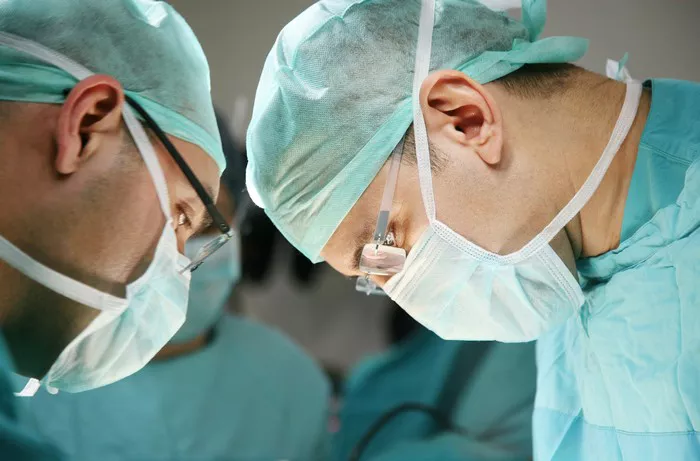Breast reconstruction is a significant consideration for many women who undergo mastectomy due to breast cancer. Delayed breast reconstruction, performed months or years after mastectomy, raises concerns about the pain and recovery involved. This article explores the pain associated with delayed breast reconstruction, factors influencing pain levels, and pain management strategies.
Understanding Delayed Breast Reconstruction
Delayed breast reconstruction refers to reconstructive surgery performed after the initial mastectomy and any necessary cancer treatments. It contrasts with immediate reconstruction, which occurs simultaneously with mastectomy. Delayed reconstruction allows patients to complete cancer treatments and achieve a period of recovery before undergoing further surgery.
Reasons for Choosing Delayed Reconstruction
Cancer Treatment Completion: Patients often need to finish radiation or chemotherapy before undergoing reconstruction.
Patient Preference: Some patients prefer to focus on cancer treatment first and delay reconstruction until they feel ready.
Medical Advice: Surgeons may recommend delayed reconstruction to ensure the best outcomes, especially if radiation therapy is required.
Types of Delayed Breast Reconstruction
Implant-Based Reconstruction: Involves inserting saline or silicone implants.
Autologous Reconstruction: Utilizes the patient’s own tissue, typically from the abdomen (DIEP flap), back (latissimus dorsi flap), or other areas.
See Also: 7 Ways To Choose The Right Breast Implant For You
Pain Associated with Delayed Breast Reconstruction
The pain experienced during delayed breast reconstruction varies based on the type of reconstruction, individual pain tolerance, and the surgical technique used. Understanding the sources of pain can help manage expectations and improve preparation.
Pain Sources in Implant-Based Reconstruction
Surgical Incisions: Incisions in the chest wall can cause significant pain during the initial healing phase.
Tissue Expansion: Involves gradually stretching the skin and muscle to make room for the implant, which can cause discomfort and tightness.
Implant Placement: Placing the implant under the muscle can lead to muscle soreness and pain.
Pain Sources in Autologous Reconstruction
Donor Site Pain: Harvesting tissue from areas like the abdomen can result in pain at the donor site, similar to a tummy tuck.
Reconstructed Breast Pain: The newly reconstructed breast may experience soreness and discomfort as it heals and integrates with the body.
Muscle and Nerve Pain: Transferring tissue involves cutting and repositioning muscles and nerves, leading to pain in both the donor and recipient sites.
Factors Influencing Pain Levels
Several factors can influence the level of pain experienced during delayed breast reconstruction. Understanding these factors can help in managing and reducing pain.
Type of Reconstruction
Implant-Based vs. Autologous: Autologous reconstruction generally involves more extensive surgery and multiple sites, leading to higher pain levels compared to implant-based reconstruction.
Flap Type: Different flap techniques (DIEP, TRAM, latissimus dorsi) have varying pain profiles based on the tissue harvested and the complexity of the procedure.
Individual Pain Tolerance
Pain Threshold: Each patient’s pain threshold varies, influencing how pain is perceived and managed.
Previous Surgery Experience: Patients with previous surgical experiences may have different expectations and coping mechanisms for pain.
Surgical Technique and Expertise
Surgeon Skill: The expertise and technique of the surgeon can significantly impact pain levels and recovery. Experienced surgeons may minimize tissue trauma and use advanced pain management strategies.
Surgical Approach: Minimally invasive techniques and nerve-sparing methods can reduce postoperative pain.
Pain Management Strategies
Effective pain management is crucial for a smooth recovery after delayed breast reconstruction. Various strategies can help alleviate pain and improve overall comfort.
Preoperative Pain Management
Patient Education: Educating patients about what to expect can reduce anxiety and improve pain management.
Pain Assessment: Assessing the patient’s pain tolerance and history helps in creating a personalized pain management plan.
Intraoperative Pain Management
Anesthesia: General anesthesia is used during the procedure to ensure the patient is pain-free.
Nerve Blocks: Local anesthetics can be used to block pain in specific areas, reducing postoperative pain.
Postoperative Pain Management
Medications: Pain relievers, including opioids, nonsteroidal anti-inflammatory drugs (NSAIDs), and muscle relaxants, are prescribed to manage pain.
Nerve Blocks and Catheters: Continuous nerve blocks or pain catheters may be used to provide localized pain relief for an extended period.
Physical Therapy: Gentle exercises and physical therapy can improve mobility and reduce stiffness, aiding in pain management.
Patient Experiences and Pain Perception
Each patient’s experience with pain during delayed breast reconstruction is unique. Patient testimonials and studies provide insight into common pain patterns and coping strategies.
Patient Testimonials
Pain Levels: Many patients report moderate to severe pain immediately after surgery, which gradually decreases over weeks.
Pain Duration: Pain typically peaks in the first few days post-surgery and improves significantly within a few weeks.
Coping Strategies: Patients find relief through a combination of medications, rest, and support from healthcare providers.
Clinical Studies
Pain Scores: Studies often use pain scales to quantify pain levels, showing variations based on reconstruction type and individual factors.
Recovery Timeline: Research indicates that while initial pain can be intense, most patients experience substantial pain reduction within a month.
Psychological Aspects of Pain
The psychological impact of delayed breast reconstruction can influence pain perception and management. Addressing psychological factors is essential for holistic pain management.
Anxiety and Depression
Impact on Pain: Anxiety and depression can exacerbate pain perception and hinder recovery.
Support: Counseling and support groups can help patients manage psychological stress and improve pain outcomes.
Body Image and Self-Esteem
Emotional Impact: The process of reconstruction and the final results can significantly affect a patient’s body image and self-esteem.
Positive Outcomes: Successful reconstruction can enhance body image and reduce psychological distress, indirectly improving pain management.
Conclusion
Delayed breast reconstruction involves a complex interplay of physical and psychological factors that influence pain levels. Understanding the sources of pain, individual factors, and effective pain management strategies can help patients navigate the reconstruction process with greater confidence. While pain is an inevitable part of the journey, comprehensive care and support can significantly alleviate discomfort and improve overall outcomes.
Related topics:

